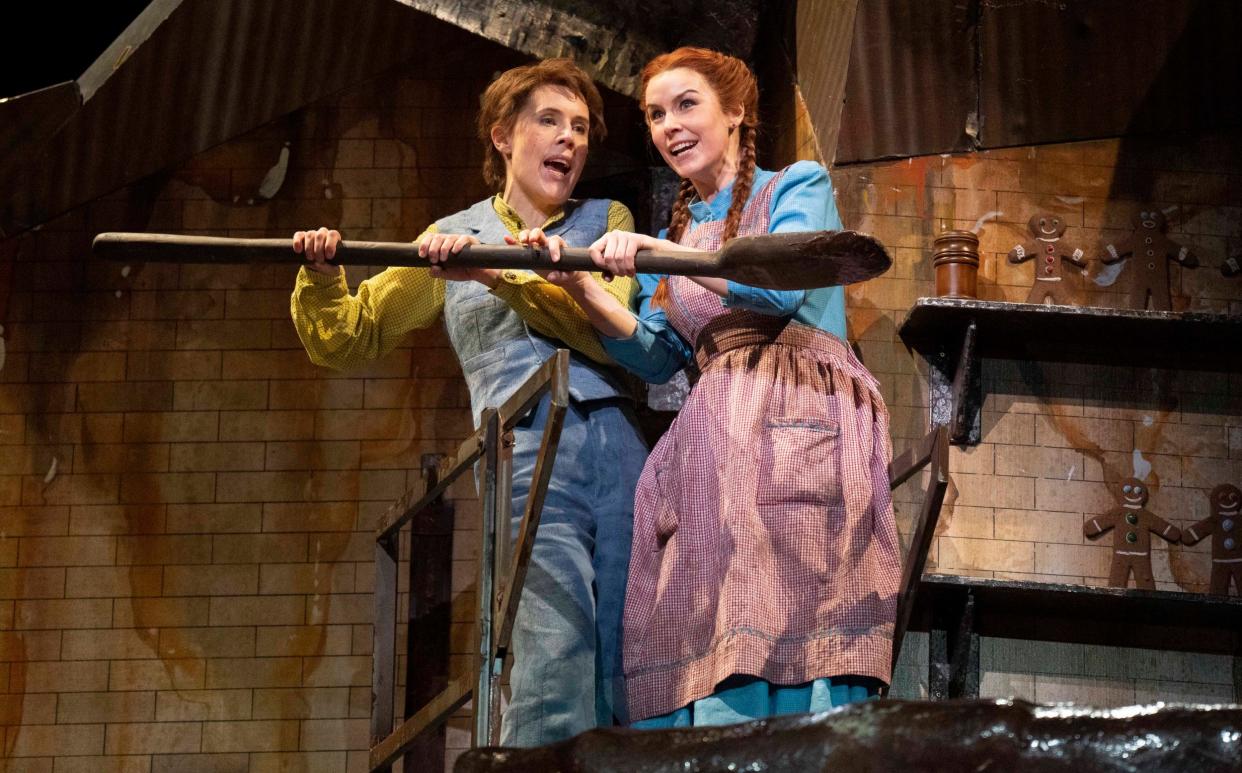Hansel and Gretel, Royal Opera House, review: the kids might need a few breadcrumbs

The Royal Opera is making an admirable effort to make its Christmas offering family friendly, reviving its lively small-scale show Wolf Witch Giant Fairy in the Linbury Theatre and bringing back its 2018 staging of Humperdinck’s ever-fresh Hansel and Gretel in the main house.
It is not entirely obvious, however, what younger generations might make of Antony McDonald’s clever and allusive production of the opera, since his staging is firmly rooted in the original Grimms’ fairy tale, rather than any contemporary take, with copious references to other Grimms stories dotted throughout the work. And when it veers nearer the present, in act three, the reference in the designs (also by McDonald) is to the horror house in Hitchcock’s Psycho – or perhaps, since this is a rickety structure which turns to reveal its inner workings, to Cornelia Parker’s take on that film in her PsychoBarn installation, which took up residence in London after its 2016 outing at the Met Museum in New York, but wasn’t exactly for children.
Still, the resonances don’t need to be fully appreciated if the narrative is clear, and here there is a big advantage over the original production in that the opera is now sung in English (still with surtitles) in a lively new translation by Kelley Rourke. “We can’t eat prayers,” sing the hungry family of Gertrud (Susan Bickley) and Peter (Darren Jeffery), whose descent into poverty is signalled at the start as a clock whizzes through the hours over the landscape front curtain.
So the context is well set for the outstanding Hansel of Anna Stéphany, gangly, ardent and crystal clear, and the lively Gretel of Anna Devin, bright as a button but less sharp with the words, to set off foraging into a dark forest animated by fairies and animals, where you expect them to encounter a Gruffalo. Instead, in the famous dream sequence which concludes act two, they are guarded not by the 14 angels of the original but by intertwined Grimms characters: Cinderella, Red Riding Hood and a wolf who chops Rapunzel’s hair. Ingenious, but it’s not clear what it signifies, whereas, for example, David Pountney’s classic ENO production at this point created the unforgettable dream of a ghostly, angelic English village.
There is something unbalanced about the shape of the original libretto by Adelheid Wette, since we have to wait for act three for the Witch to show herself. Here Rosie Aldridge’s effervescently friendly hostess morphs into a dark-clad knife-wielding monster, before the children dispose of her into her own boiling chocolate factory.
The resurrected children’s chorus at this point is excellent; there are crisp cameos by Isabela Díaz as the Snowman and Sarah Dufresne as the Dew Fairy; Mark Wigglesworth conducts with a fine, natural sweep which allows the chromatic inflections of the score to emerge, while highlighting the German folk-song origins more than the pseudo-Wagnerian allusions. At present the show never finds quite enough propulsion and energy to keep us fully engaged, but is rapturously received by the family audience.
To January 7, with different casts roh.org.uk

